

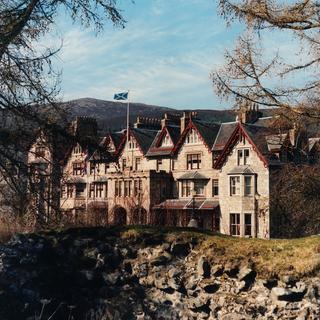
In the Highlands, bedrooms fit for lords
FeatureIn Scotland's wildest region, a famous Swiss gallery-owning couple, Iwan and Manuela Wirth, have restored the noble Fife Arms to its former glory. This 19th-century Victorian-style hotel is adorned with artworks from their collection.
After crossing the Lowlands, the car finally reached the Highlands, a region of Scottish mountains. The landscape is reminiscent of the finale of Skyfall, from the James Bond series, with its desolate moors covered in heather and dotted with black-headed white sheep. Welcome to the Cairngorms National Park, the largest in the British Isles. This wild land, with its changing lights and haunted castles, captivated Iwan and Manuela Wirth, co-founders of the influential Hauser & Wirth art gallery.
The Swiss couple purchased an old hotel in the village of Braemar in 2014, just a few kilometers from Balmoral, the summer residence of Queen Elizabeth II and, before her, Queen Victoria. Since the mid-19th century, this part of Scotland has attracted visitors for its fresh air, walking trails and prestigious neighbors. Founded in 1856, the Fife Arms was advertised as a "first-class" hotel. This Victorian-style building, made of pink and gray granite with gabled pediments, had lost its splendor, but five years of renovations restored its magnificence, especially since the gallery owners enlisted renowned artists.
Californian Richard Jackson designed a multicolored chandelier that highlights the beauty of the woodwork in the majestic lobby. A large abstract expressionist painting by British artist Keith Tyson is hanging in the stairwell, where you can make out antlers (deer are omnipresent in the hotel, as there are a million of them in the region). And Argentine Guillermo Kuitca painted the dining room walls in a "cubistoïde" style (his own term) reminiscent of a fresco.
14,000 works and art objects
Staying with the Wirths is like living surrounded by wonders. The couple displays treasures from their personal collection in the hotel, such as two by Pablo Picasso, an imposing village scene by Pieter Brueghel the Younger and a fabric installation by Louise Bourgeois. They acquired remarkable antiques, like a monumental fireplace dedicated to Scottish poet Robert Burns, Highlander swords and paintings of moorland animals created a century ago by the master of the genre, Archibald Thorburn.
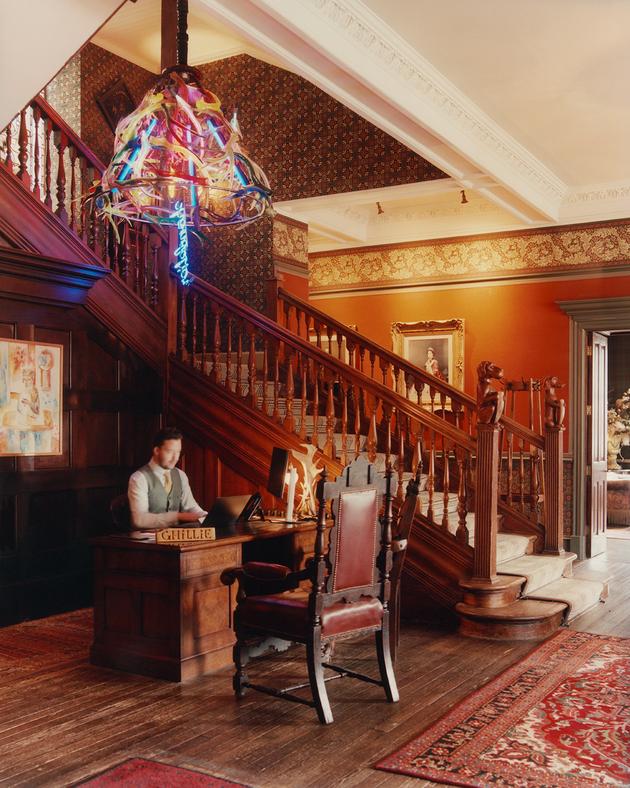
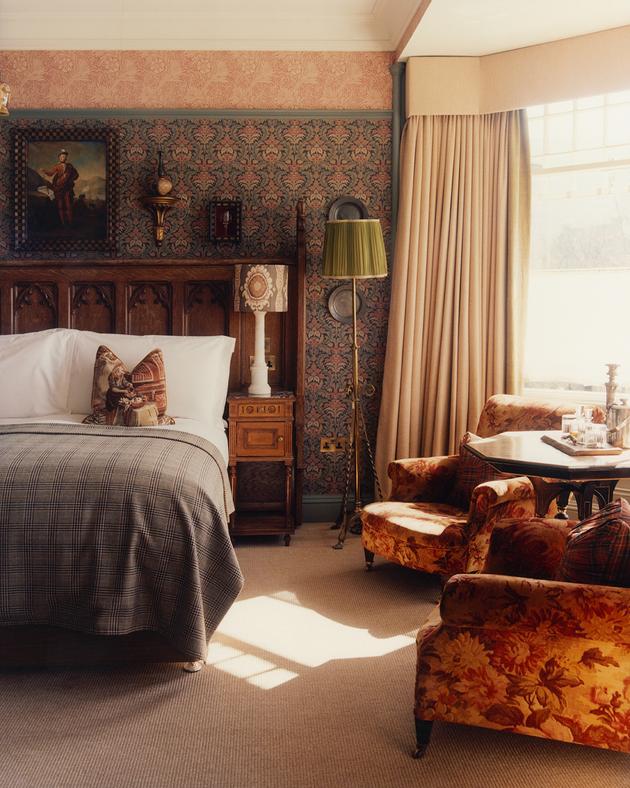
You walk along a long corridor with creaky floors, lined with large portraits of intimidating aristocrats. In the room named The Jacobite Risings, after the Jacobite rebellions (1686-1745) aimed at restoring the Stuarts to the Scottish throne, the ambiance is equally aristocratic. The faces of the pretenders to the throne stare sternly down at you. But, if you want to relax, you can pour yourself a glass of whisky and admire the village from the bow window overlooking the main street.
When night falls on Braemar, it is pleasant to descend to the lounge to read a leather-bound, gold-edged novel by Walter Scott, picked from the library, or a monograph of a contemporary artist exhibited at Hauser & Wirth, in front of the fire blazing in the fireplace. If you haven't overindulged on scones with clotted cream (a type of thick fresh cream) during afternoon tea, you can enjoy scallops and venison at the hotel's restaurant. Or, indeed, haggis (stuffed sheep's stomach) at the Flying Stag, the adjoining pub enhanced by a large stuffed stag with broad white wings.
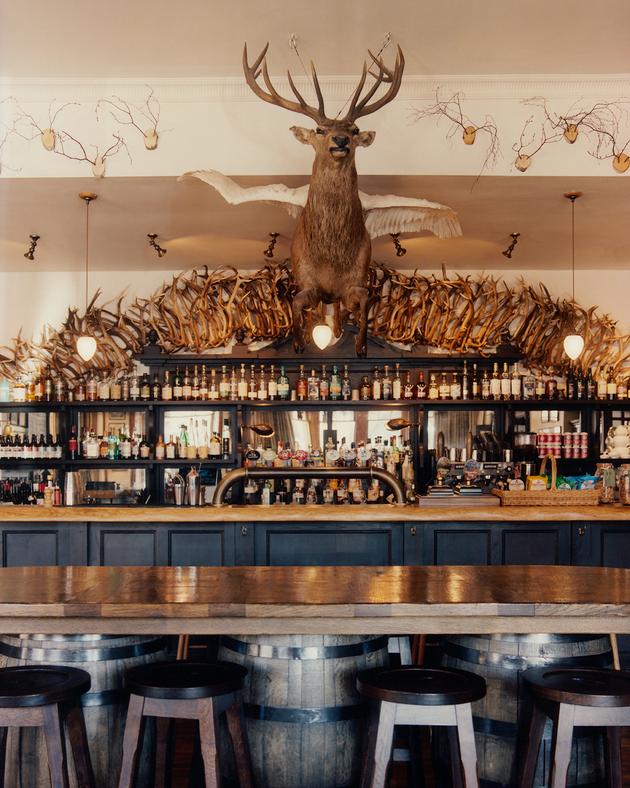

It would take forever to describe all the works of art and objets d'art scattered throughout the hotel (there are 14,000 of them), and every stroll through the vast 46-room establishment is an opportunity to admire them. There is even a drawing by Queen Victoria (of deer antlers, of course) and watercolors by King Charles III depicting his beloved castles (Balmoral, Windsor and Sandringham).
River Dee for summer swimming
To experience the beauty of Scotland, with its intermittent drizzle, changing colors and the thrill of an oceanic storm, you can take a gentle walk near the hotel following the River Dee, where it's possible to swim in summer. Further on, you tread on thick moss that carpets the forest of Scots pines and Douglas firs. If you're lucky, you may see Highland cattle with large horns and blond fringes covering their faces. Other castles appear, some in ruins, some inhabited.
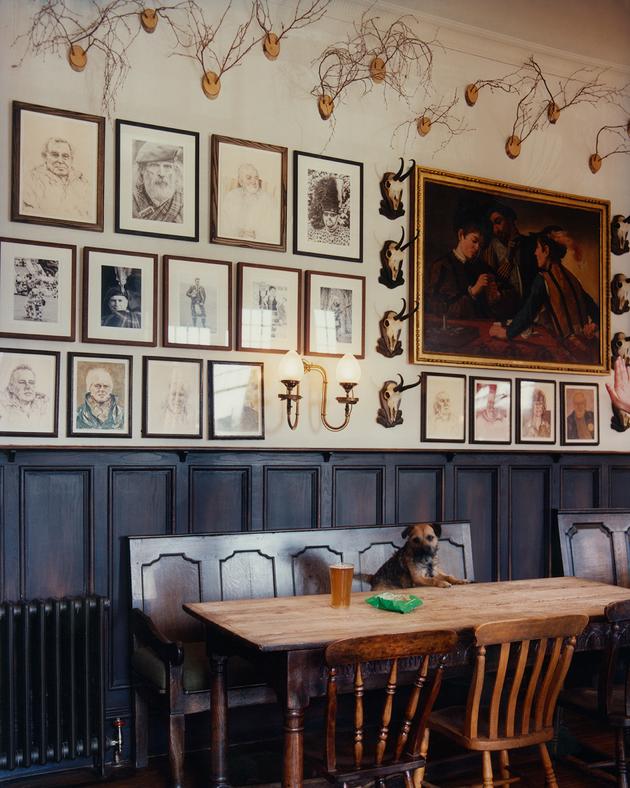

As for Balmoral, it is only open to the public from April to July before the royal family settles there in August to enjoy the blossoming heather, when the mountains are covered in sumptuous pink-purple. If the weather is truly gloomy, the staff, dressed in tweed and tartan (the men often in kilts), lend Barbour jackets and rubber boots to the guests and, for the wealthiest clients, the establishment also has golf clubs and organizes hunting parties.
The enchanting setting of the Fife Arms, with its English garden planted with local species, is more than sufficient in itself, but the great hikes attract travelers as soon as their gaze soars to the surrounding peaks, like a call to infinity.
The address The Fife Arms Hotel, Mar Road, Braemar (United Kingdom).
Getting there Paris-Edinburgh with EasyJet from €40 one-way (Air France from €140). Then rent a car at the airport (two-hour drive). If you don't drive, there are connecting flights to Aberdeen (from there, a bus connects Aberdeen to Braemar in two hours and 15 minutes from €17 one-way: stagecoachbus.com). By taking the Eurostar and then the London North Eastern Railway, Aberdeen can also be reached by train (prices and information on eurostar.com and lnerinternational.com, involving at least 10 hours of travel).
Staying there From €420 per night.

